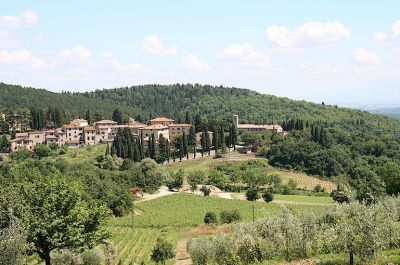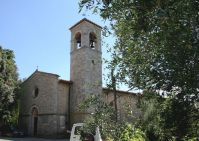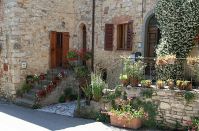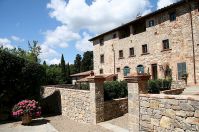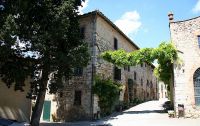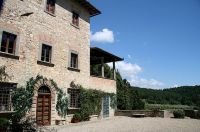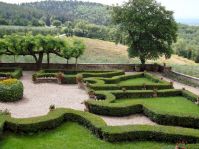Fonterutoli - Castello di Fonterutoli
The tiny village of Fonterutoli was already known in Etruscan times and takes its name from the Latin fons rutolae or fons rutilant (clear spring). It was known as a halting place for food and rest on the road leading from Sienna via Castellina to Florence. It was here in 998, that the Holy Roman Emperor, Otto III, allocated the property of the aretine Church to Sienna. The ancient castle stood on a hill overlooking the Elsa valley, on the border between the municipalities of Sienna and Florence and the dioceses of Sienna and Fiesole. Reference to it is made in a document from Pope Alexander III in 1177. The church, dedicated to San Miniato, was the site of important agreements between Sienna and Florence, such as the one signed on 29 March 1201 that granted Sienna the right to annex Montalcino and the one signed on 6th October 1208 whereby Sienna renounced its right to Poggibonsi and all its territory.
Although very little is left of the original church and the castle, a fine villa, referred to as the "Castello di Fonterutoli" and located beside the piazza in front of the present church, has been in the family Marchesi Mazzei since 1435, and 24 generations of that family have been making wine here throughout that period. The earliest written reference to Chianti as a wine was in a sales contract, signed by Ser Lapo Mazzei, a member of this family, in 1398.
Fonterutoli is a charming village, well worth a visit, and the Etruscan necropolis of Poggino is located in the nearby woods. The duomo and campanile of Sienna are visible in the distance.
Although very little is left of the original church and the castle, a fine villa, referred to as the "Castello di Fonterutoli" and located beside the piazza in front of the present church, has been in the family Marchesi Mazzei since 1435, and 24 generations of that family have been making wine here throughout that period. The earliest written reference to Chianti as a wine was in a sales contract, signed by Ser Lapo Mazzei, a member of this family, in 1398.
Fonterutoli is a charming village, well worth a visit, and the Etruscan necropolis of Poggino is located in the nearby woods. The duomo and campanile of Sienna are visible in the distance.

